阐述2013年电子游戏行业的9大AI趋势
作者:Alex J. Champandard
2013是游戏AI及整个游戏行业的兴盛年。2012年行业遭遇的经济打击仍持续影响2013年,导致这一年出现了不少令人瞩目的工作室裁员及关闭现象,某些专注于AI领域的工作室尤其如此。随着商业模式的变化,以及新硬件所带来的风险及巨大潜力,人们对AI的期望也超过了以往。
但是,游戏行业在2013年出现了超越以往的巨大发展、多样性和创新性,这部分要归功于程序生成等AI技巧的使用以及模拟游戏等传统AI游戏题材的复兴(注:程序生成技巧及rogue-like游戏设计已经是2012年的趋势)。
1.旧式模拟游戏
众筹平台拯救了濒临死亡的题材,Bullfrog式的模拟游戏。
Kickstarter 在2012年的崛起为已被遗忘的游戏风格开创了全新的机遇。这其中的代表当属模拟游戏题材,例如旧式的Bullfrog经典游戏,《Theme Hospital》以及《Dungeon Keeper》。在2013年,我们看到了《Maia》、《Prison Architect》、《Spacebase DF9》、《RimWorld》等收获了不少人气的复古游戏。
正如Javier Arevalo在Twitter上所言,这可能要归功于网页和手机游戏早期的人气发展。因为这一点,玩家得以从此类肤浅的游戏体验转向更有深度的AI模拟游戏中。
2.收购创新
大型发行商从小型工作室购买创新AI以多样化或重新利用玩家的想象力。
2013年鼓舞人心的一个趋势就是发行商收购公司或从小型技术工作室获得AI技术授权。这方面的例子包括索尼的Everquest Next(基于VoxelFarm的程序生成地形引擎)以及Storybrick的实用&驱动系统,以及Linden Labs收购Little Text People并发布了Versu。
毫无疑问,这一模式在授权之后需要重写许多代码才能生效,但它却是为传统发行商及其主流游戏注入更多AI的一个健康方式。它还是逐渐失势的发行商在这个快速变化的行业中奋力一搏的机会。
3.人才流失
已成规模的工作室流失了关键的AI团队成员,以及某些游戏系列质量逐年下降。
随着越来越多富有经验的程序员独立开发、中间件或其他行业,这一趋势在过去数年中一直是个问题。大型游戏工作室一般拥有更高频率的人事变动,当然这也对其AI团队造成了影响,其结果在2013年尤其明显。
这一趋势导致有些热门游戏品牌和工作室无法再继续依赖之前的成就,从而遭遇比之前更低的用户得分和更糟糕的评价。增加游戏的复杂性和引擎代码库大小并没有什么帮助,但如果富有经验的开发者仍然在团队中这一切就都还是可管理的状态——但不幸的是事实并非如此。
4.即兴AI
虽然这有点用词不当,Everques Next的营销团队还是通过承诺MMO中的实际AI而引起了人们的共鸣。
在营销方面,Everquest Next团队确实以极妙的手法向潜在玩家出售“即兴AI”概念。但是,那些追随AiGameDev.com已有些时日的人应该知道我们的格言:“即兴还不够完善”。
当然,玩家并不想要只为自己而存在的AI,他们想到特别面向他们提供小说情境和可预测的反应这种组合的AI。育碧最近几年在这上表现出色,例如《孤岛惊魂3》中的开放世界AI方向及其对该技术的运用。
5.更多bot
热门FPS和MOBA游戏擅长以bot作为训练工具,并帮助优化进程曲线。
从《使命召唤》这种第一人称射击游戏的Squad模式中所出现的bot,到极具竞争性的MOBA游戏所提供的训练模式中的bot,bot已成为将单人模式AI引入多人游戏的一个绝佳方式,例如难度和进程平衡,训练和辅导,当然,还有离线模式。
在PC射击游戏曾经可模块化的时候,Bot也有过自己黄金时代。有些工作室(游戏邦注:例如Guerrilla或Valve)曾多年将bot视若珍宝,但它们现在几乎是无处不在了。事实上,《战地4》却因为缺乏bot支持而出众,《超神英雄》却因其bot API而额外获得许多赞誉!现在bot在游戏行业中的地位日益突出,其未来数年的质量提升值得期待。
6.利基市场
基于故事或社交互动的游戏,例如《Versu》或《Redshirt》获得了一些成功,但却并没有成为主流热作。
简单的物理游戏或谜题游戏有一些触感,你执行一项操作可以立即得到反馈,这会让游戏更具易用性和回报性。而基于AI的游戏却更为间接,其回报也是间接性的。这会缩小潜在用户的规模吗?
发布于数年前的《PROM Week》就遭遇了这种困境,而2013年同劫的游戏则是《VERSU》。虽然这两者都广受好评,但却未获得巨大的人气。它正成为游戏AI的一根刺,令《模拟人生》成为一个特例而非惯例。难道只有EA才能够制作出这种玩法作品吗?
7.激烈的竞争
《星际争霸》竞争中可以看到过硬的RTS AI改进情况。
去年我们看到BotPrize备受赞誉,其中有两个Unreal Tournament bot被称为比一般人类更具“人性”!这一方法还存在许多问题,其结果也仍然存疑。但所幸2013年弥补了这一切,《星际争霸》竞赛以及我们的#ctfcomp均可看到一些出色的技术。
在夺旗模式方面,许多此类系统的第一次分录执行可见于一些热门射击游戏,例如敌人预测/追踪、影响绘图、走廊图表、地形分析、分级任务网络以及针对bot和指挥命令的规划域。这个不足3个月就完工的作品真令人惊叹!《星际争霸》竞赛也变得越来越强,其竞争结构最终能够应对暴雪的RTS闭源属性(游戏邦注:例如加速模拟,自动复生配对)。它还对这些解决方案的质量,以及公开制定所有的意见所需要的开源条件产生了影响。
8.中间件问题
Xaitment悄悄地被iOpener Media重新收购了,Autodesk不再重视BT工具,StoryBricks现在也承接外包项目了。
中间件领域总是具有多变性,有些公司在过去几年总是比其他公司表现得更好。AI中间件的潜在主题有两种,一是寻径技术总是很抢手,你很难找到一个不使用该技术的理由。二是高级AI中间件的采用仍然很罕见(例如针对角色行为的AI),我们仍然还有很长的路要走。
总体而言,这会让现有的中间件供应商处于棘手的位置。这是一个很有难度的市场,这里的高预算AAA游戏更少,许多含有合理的寻径解决方案的,开源解决方案的商业引擎通常就“够用了”,这一行竞争很激烈。好消息就在于,这些公司似乎仍将长期在这一领域中立足。
9.自动化伙伴
拥有AI的顶级游戏一般并不是技术出众,而是靠强大的设计、故事和动画取胜。
如果没有AI伙伴参与玩法,开发者就难以创造出富有吸引力的单人故事型的游戏。有了强大的AI伙伴,你可能会有危及玩家控制权的风险,而如果AI伙伴太弱了,那就可能变成一次令人抓狂的体验。
2013年这方面的典型代表游戏包括《生化奇兵:无限》以及《最后的生还者》,这两者均正面解决了这一问题,将重心置到AI身上。当然,这一领域总是还有许多提升空间并且需要更多调查研究,但其结果显然已经超越了游戏的其他领域。毕竟实现这一高度还需要多个学科的大量合作。(本文为游戏邦/gameboom.com编译,拒绝任何不保留版权的转载,如需转载请联系:游戏邦)
This Year in Game AI: Analysis, Trends from 2013
Alex J. Champandard
It’s been an exciting year for artificial intelligence and the games industry in general as well. The economic downturn that hit the industry in 2012 is still ongoing this year, with some high-profile layoffs or closures in some AI-focused studios in particular. More are to be expected as business models change and new hardware introduces significant risks along with their huge potential.
However, more so than last year, 2013 saw some incredible growth, diversification and creativity in the whole industry – partly thanks to increasing use of AI techniques like procedural generation and to a rebirth of traditional AI genres like simulation games. (NOTE: Procedural techniques and rogue-like game design were trends for last year already, so don’t expect them again!)
#1
Old-School Sim Games
Crowd-sourcing brought back a dying genre, Bullfrog-style simulations. Prison Architect, Spacebase DF9…
The rise of Kickstarter in 2012 has yielded a very fruitful year for new and forgotten styles of games. Chief among them is the simulation genre, such as the old Bullfrog classics like Theme Hospital and Dungeon Keeper. In 2013, we saw games such as Maia, Prison Architect, Spacebase DF9, RimWorld (and more) all achieve popular success.
As Javier Arevalo points out on Twitter, this could be attributed to the earlier growth in popularity of web-based and mobile games. Players have sinced moved away from such shallow experiences (with the fall of Zynga as evidence) and deeper AI-driven simulations are a perfect antidote to the grind!
#2
Purchasing Innovation
Big publishers buying innovative AI from small studios to diversify & recapture gamer’s imagination.
One trend that seems very encouraging is publishers aquiring companies or licensing AI technology from smaller technical studios. This includes for example Sony’s Everquest Next that’s based on VoxelFarm’s procedural landscape engine (see our interview) and Storybricks’ utility & drive-based system (also see interview), as well as Linden Labs acquiring Little Text People and publishing Versu.
No doubt a lot of code was rewritten post-licensing to make it work, but this model seems like a very healthy way to inject more AI into typically conservative publishers and their mainstream games. It also arguably reflects desperation, as a way for less relevant publishers to gamble for better fortunes in this fast pace industry.
#3
Brain Drain
Established studios losing key AI team members and the quality of some franchises dropping vs. previous years.
This trend has arguably been the case for years as experienced programmers move into indie development, middleware or other industries (as Andrew Fray and Mark J. Nelson pointed out on Twitter). Large game studios tend to have higher turn-over and of course this has impact on their AI teams, and the results were particularly noticeable this year.
This trend left some of the high profile franchises and studios unable to build on previous achievements, ending up with lower user scores and poorer reviews than their previous iterations. It’s true that growing game complexity and engine codebase size does not help, but all of this is manageable assuming experienced developers remain in place — which sadly is not always the case.
#4
Emergent AI
Although it’s somewhat of a misnomer, Everquest Next’s marketing team struck a chord by promising actual AI in MMO.
On the marketing front, the Everquest Next team did a great job (re)selling the concept of “Emergent AI” to their potential players, and built a lot of excitement in the process. However, those of you that have been following AiGameDev.com for a while know our motto on the topic: “emergence is not good enough,” which gets reinforced in our interviews on a regular basis.
Of course players don’t want an AI that’s there only for its own selfish purposes, they want AI that’s specifically crafted to give them a combination of novel situations and predictable responses. Ubisoft has done this particularly well in recenty years, starting in Far Cry 3 with it’s open world AI direction and applying the technology .
#5
More Bots
Top FPS and MOBA titles feature bots prominently, useful as a training tool and to help smooth the progression curve.
From the first-person shooters like Call Of Duty featuring bots in their Squad mode (see previous interview), to the highly competitive MOBA games offering bots as a training mode. Bots are a great way to bring the benefits of single-player AI to multiplayer games, for example difficulty and progression balancing, training and tutoring, and of course, offline mode.
Bots had their golden age when PC shooters used to be modable. Some studios (like Guerrilla or Valve) have valued bots for years, but they’re now almost ubiquitous. In fact, Battlefield 4 stands out for lacking bot support and conversely Heroes of Newerth gets extra credits for its bot API! It’ll be interesting to see the quality of bots improve over the next few years now they are being featured more prominently.
#6
Natural Language Niche
Story-based or social interaction games as Versu or Redshirt found some success, but not mainstream hits.
There’s something tactile about simple physics-based games or even puzzles; you perform an action and get immediate feedback, which makes the game much more accessible and arguably, more rewarding. AI-based games — in contrast — are more indirect and their rewards are indirect… Does this reduce the size of the potential audience?
PROM WEEK, released a few years ago, suffered from this dilema, and this year it’s games like VERSU. While both these games received critical success, they haven’t met huge popular success. It’s becoming a thorn in the side of Game AI, and makes The Sims stand out as exception rather than the rule. Is it possible only EA could afford the necessary effort to make such gameplay work?
#7
Strong Competitions
Top 5 of #ctfcomp implemented cutting-edge of FPS tech.; Starcraft contest saw solid RTS AI improvements.
Last year saw the grand BotPrize being claimed, with two Unreal Tournament bots being rated higher in “hummanness” than the average human! There are many questionable aspects of the methodology, and the results are also therefore in doubt… But luckily 2013 has made up for this, with both the Starcraft competition and our #ctfcomp saw very solid entries and some great technology.
On the Capture the Flag front, the first entries implemented many of the systems found in top shooters, for instance enemy prediction/tracking, influence mapping, corridor graphs, terrain analysis, hierarchical task network, and planning domains for both bots and commanders. Impressive for less than 3 months work! The Starcraft competition has also grown from strength to strength, with the competition infrastructure finally being able to get around the closed-sourced nature of Blizzard’s RTS (e.g. accelerated simulation, spawning matches automatically). This also had an impact on the quality of the solutions, and along with the open source requirement to make all submissions available publicly.
#8
Middleware Crunch
Xaitment silently re-acquired by iOpener Media, Autodesk de-emphasizes BT tool, StoryBricks now contracting too.
The middleware business is always variable, with certain companies performing better than others year over year. The underlying theme for AI middleware is two fold; first, path-finding is pretty much required, i.e. you need a great reason not to use one. Second, high-level AI middleware adoption is still rare (e.g. for character behavior), and we’re still a long way from seeing critical mass.
Generally, this has left existing middleware vendors in a tricky position. The market is a difficult one; there are fewer high-budget AAA titles, many commercial engines include reasonable path-finding solutions built-in, open source solutions are often “good enough” and there’s lots of competition. The good news is that the companies still in this market seem to be in it for the long term!
#9
Autonomous Buddies
Top games nailed co-operation with AI; it mostly wasn’t about tech., but strong design, storytelling and animation.
Creating engaging single-player stories is very difficult to do without AI buddies that are involved in gameplay, which historically has been a hard thing to do. With a powerful AI buddy you risk removing agency from the player, and with a weak AI buddy it can become a frustrating escort mission…
Top games this year such as BIOSHOCK: INFINITE and THE LAST OF US both tackled this problem head on, putting a huge focus on AI. Of course, there’s always room for improvement and more research in the area, but the results are clearly a level above anything else done in games so far. Getting to this level has required an amazing amount of multi-disciplinary collaboration.(source:aigamedev)
上一篇:举例分析连线消除游戏的机制


























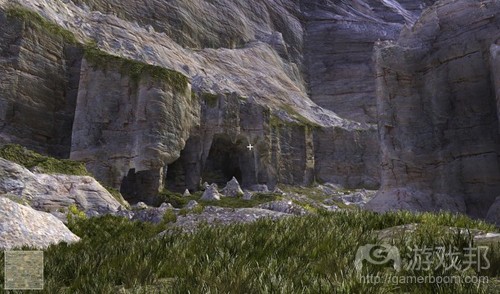
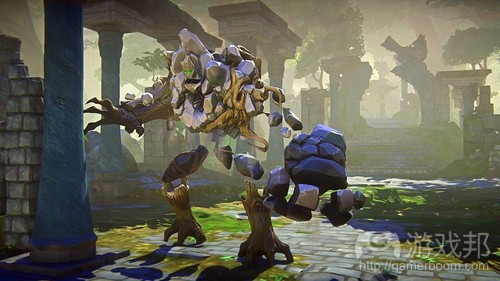
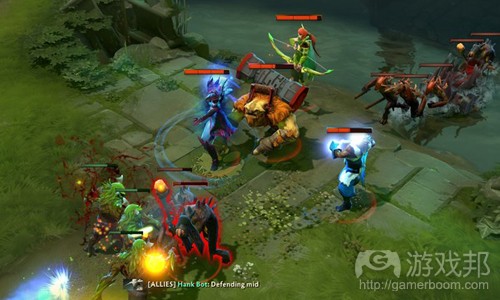

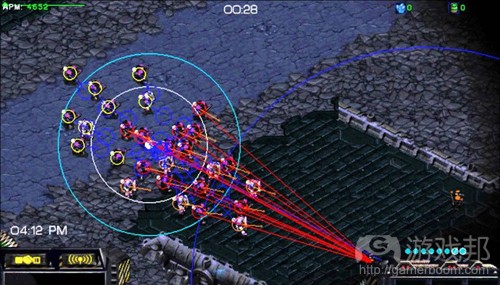
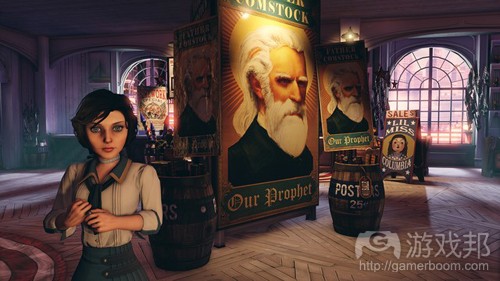














 闽公网安备35020302001549号
闽公网安备35020302001549号